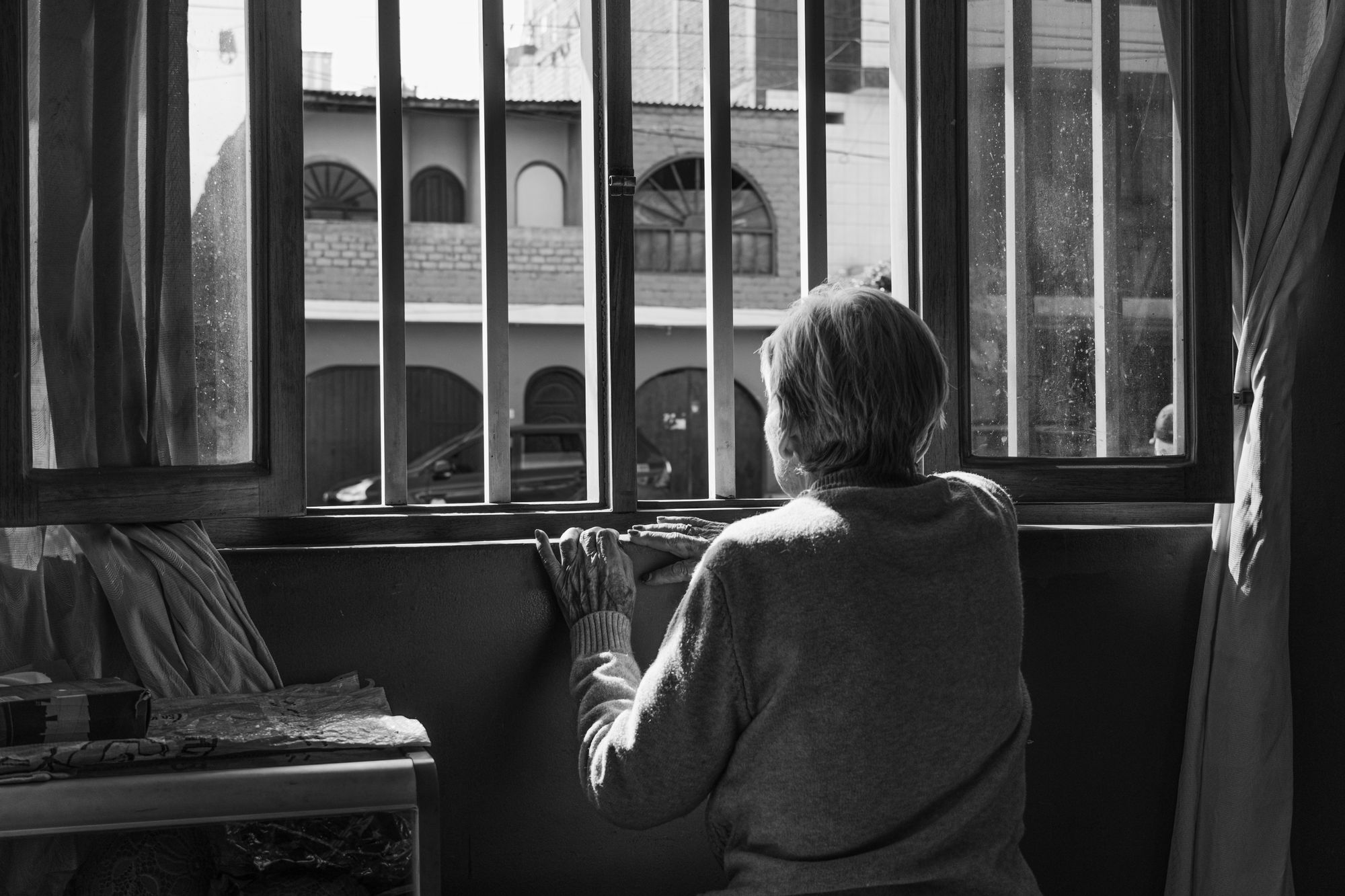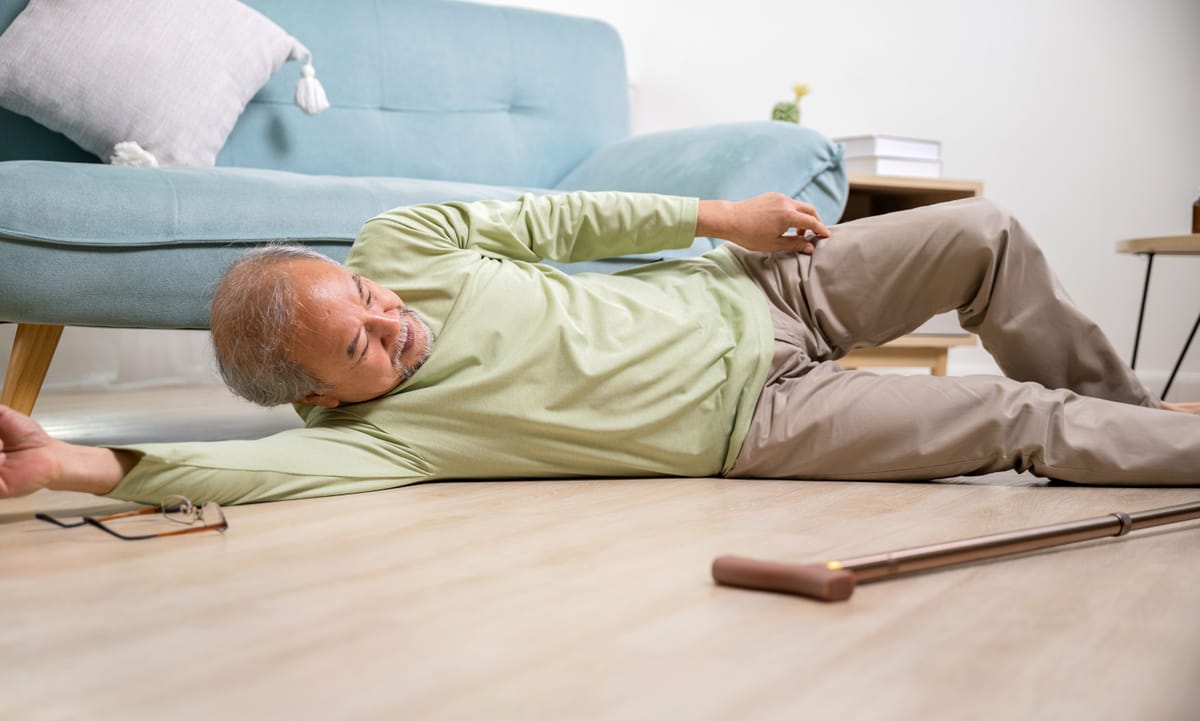Successfully Aging in Place
This comprehensive guide will help you understand the importance of planning ahead, navigating the advantages and challenges, preparing your home, and finding the support you need to thrive as you age in place.

The concept of aging in place has never been more relevant. As we continue to live longer and healthier lives, the desire to maintain our independence and stay in our own homes grows stronger. Place aging refers to the concept of individuals continuing to live in their chosen homes as they grow older, emphasizing the importance of planning for evolving needs and services over time. But what does it mean to successfully age in place, and how can we ensure a successful experience for ourselves and our loved ones? This comprehensive guide will help you understand the importance of planning ahead, navigating the advantages and challenges, preparing your home, and finding the support you need to thrive as you age in place.
Understanding Aging in Place

Aging in place is about staying in one’s own home while adapting to the changes that come with age. It allows older adults to maintain their independence and control over their lives, avoiding the need for an assisted living facility or nursing home. With the right planning and support, aging in place can be a comfortable and fulfilling experience.
But what exactly does it entail, and why is it so important? Aging in place involves making modifications to one’s home to make it more accessible and comfortable for an older adult. This can include installing ramps, widening doorways, and adding grab bars in the bathroom.
Definition of aging in place
Aging in place means having the ability to stay in your own home and community, regardless of age, income, or ability level, and still be safe, independent, and comfortable. It's a conscious decision to remain in a familiar environment, surrounded by the people and memories that matter most.
While the idea of aging in place might sound appealing, it's not without its challenges, such as limited mobility, feelings of isolation, and difficulties with home upkeep. That's why it's essential to assess personal needs, make necessary home modifications, and build a strong enough support system and network to ensure a successful aging in place experience.
Importance of aging in place
Independence and control are fundamental to our well-being, especially as we grow older. Aging in place allows seniors to maintain these aspects of their lives. In fact, 88% of older adults age aged 50-80 believe it's important to stay in their homes for as long as possible.
The advantages of aging in place include staying connected with family, friends, and support systems, avoiding isolation or loneliness that can come with institutionalized care, and having the peace of mind that loved ones are close by.
Furthermore, initiatives such as the Archstone Foundation's support for villages across California and New York City's Aging Improvement Districts are making it easier for older adults to age in their communities safely.
Advantages and Disadvantages of Aging in Place

While aging in place offers numerous benefits, it's important to acknowledge the challenges that may arise. Understanding the advantages and disadvantages can help you make informed decisions about your living situation as you grow older.
Benefits of aging in place
Aging in place can bring independence, comfort, and security, as well as cost savings compared to expensive assisted living facilities or senior living communities. Moreover, research shows that older adults who age in place enjoy improved physical and mental health when compared to those who move into assisted living facilities.
With the advancement of care and the growth of home health services, more Americans now have the ability to age in place and maintain their quality of life.
Challenges of aging in place
Despite its benefits, aging in place comes with its own set of risks and challenges. Seniors may face hazards such as falls, social isolation, and difficulty accessing medical care. The cost of aging in place can also be significant, even if the home is fully paid off.
Furthermore, aging in place may not be the best option for individuals with physical conditions or cognitive disorders, as they may require specialized care that's not easily accessible in their own homes.
Preparing for a Successful Aging in Place Experience

Proper planning is essential for a successful aging in place experience. Assessing personal needs, making home modifications, and building a support network are all crucial steps to ensure that you or your loved one can live independently and comfortably in your own home.
Creating a plan for aging in place can be daunting, but it doesn't have to be. With careful planning and the right resources and support, you can make sure you are in good hands.
Assessing personal needs
Before embarking on the journey of aging in place, it's important to evaluate your personal needs and the types of assistance you may require in the future. Consider any existing or potential health conditions and how they may impact your ability to move around or care for yourself.
Visiting nurses or telehealth services can provide medical care, while other resources can help with meal planning, grocery delivery and preparation, housekeeping, and transportation. Discussing your needs with your doctor and a geriatric care manager can provide valuable insights and guidance.
Here is a guide you can use to assess if your aging family member needs increased help in the home.
Home modifications and renovations for aging in place
To age comfortably and safely in place, it's essential to make age-appropriate home modifications and renovations. This may include adding a zero-threshold entry, widening doorways, installing grab bars, and incorporating smart technology and low-maintenance flooring for future needs.
Assessing home safety levels and addressing potential hazards early on can help allocate the right funds for home modifications and minimize the risk of accidents. You may also wish to consult a certified aging-in-place specialist from the National Association of Home Builders for expert advice and guidance.
Building a support network
A strong support network is vital for seniors who wish to age in place. Community services provide critical support for individuals, particularly older adults, to aid them in aging in place. This network may include family members, friends, neighbors, healthcare providers, and community resources. Creating a support network can involve volunteering, joining a gym, starting a book club, getting to know your neighbors and co-workers, and taking advantage of online resources.
Don’t underestimate the importance of emotional support and companionship, as they play a crucial role in maintaining the well-being of seniors aging in place.
Home Safety and Accessibility
As we age, our homes can become a source of safety concerns. Simple tasks like bathing, cooking, and navigating stairs can become hazardous. Modifying your home to address these safety issues can help prevent injuries and ensure a comfortable living environment.
Modifying Your Home for Safety
Modifying your home for safety involves assessing potential hazards and making changes to prevent accidents. Here are some common modifications:
- Installing handrails and grab bars in strategic locations, such as bathrooms and stairways
- Improving lighting to reduce tripping hazards and improve visibility
- Installing non-slip flooring and mats in areas prone to moisture, such as bathrooms and kitchens
- Widening doorways and hallways to accommodate walkers and wheelchairs
- Installing emergency response systems, such as medical alert buttons and fall detection devices
Geriatric care managers can help older adults assess their home safety needs and recommend modifications. Community resources, such as home modification programs and safety assessments, can also provide valuable guidance. By addressing these safety issues, you can create a safer and more accessible living environment as you age.
Assistive Technology and Devices
Assistive technology and devices can greatly improve safety and accessibility in the home. Some examples include:
- Personal care devices, such as shower chairs and raised toilet seats
- Mobility aids, such as walkers and wheelchairs
- Communication devices, such as phones and tablets with simplified interfaces
- Safety devices, such as smoke detectors and carbon monoxide detectors
Many older adults can benefit from assistive technology and devices, but may not know where to start. Geriatric care managers and community resources can help identify the most suitable devices and provide guidance on how to use them effectively. By incorporating these technologies, you can enhance your safety and independence in your own home.
Financial Considerations for Aging in Place

Planning for the financial aspects of aging in place is an essential part of the process. Estimating expenses and exploring funding options can help ensure that you're prepared to cover the costs associated with home modifications, in-home care, and other necessary services.
It's important to consider the long-term costs of aging in place, as well as the potential for unexpected expenses. Researching available federal government and programs, such as Medicaid and Medicare.
Estimating expenses
When estimating expenses for aging in place, consider the costs of home modifications, in-home care, security costs, specialists, and more. Consider all of your sources of income when creating a budget. This could be in the form of Social Security benefits, disability benefits, distributions from retirement accounts, and pensions.
You can also use an aging in place checklist to make the process of modifying your home easier. Remember that the cost of staying in your home as you age is likely to increase. Plan ahead to avoid any financial burden.
Funding options
Several funding options are available to help cover the costs of the health outcomes and aging in place. Government programs such as Medicare, Medicaid, and the Department of Veterans Affairs can help cover home health care costs. The Federal Housing Administration’s Home Equity Conversion Mortgage program is an option for eligible older adults to turn their home’s equity into income. Long-term care insurance is also an essential component of retirement planning, helping individuals manage their finances effectively in retirement.
Unfortunately, Original Medicare doesn’t provide full-time home care or homemaker services if that’s the only care you need. This type of health insurance also does not cover costs for a long period of time in an assisted living or skilled nursing facility. These payments need to be made by other means.
Be sure to explore all available resources and consult with a financial advisor to determine the best funding options for your situation.
Staying Healthy and Active
Staying healthy and active is crucial for older adults, as it can help prevent chronic diseases, maintain independence, and improve overall quality of life. Here are some ways to stay healthy and active:
Exercise and Physical Activity
Regular exercise and physical activity can help older adults maintain strength, flexibility, and balance. Some examples of exercises and activities include:
- Brisk walking
- Swimming
- Yoga
- Tai chi
- Resistance band exercises
Many community resources, such as senior centers and fitness programs, offer exercise classes and activities specifically designed for older adults. Geriatric care managers can also provide guidance on creating a personalized exercise plan.
Additional resources:
- National Institute on Aging (NIA) - Exercise and Physical Activity
- Centers for Disease Control and Prevention (CDC) - Physical Activity for Older Adults
- American Council on Exercise (ACE) - Fitness for Older Adults
By incorporating these modifications and activities into daily life, older adults can maintain their independence, safety, and overall well-being. Staying active and engaged is key to aging successfully and enjoying a high quality of life.
Alternative Living Arrangements for Aging in Place

For some seniors, aging in place in their current home may not be feasible or desirable. In these cases, alternative living arrangements can offer a supportive environment for aging in place while still maintaining independence and a sense of community.
These alternative independent living and arrangements can include assisted living facilities, retirement communities, and other housing options that provide a range of services and amenities tailored to the needs of seniors. These living arrangements are in place.
Downsizing or relocating
Downsizing or relocating to a more suitable home or community can be a viable option for seniors who wish to age in place but cannot do so in their current residence. Moving to a smaller home or apartment, decluttering and organizing the current living space, or relocating to a more vibrant and well-connected neighborhood are all potential solutions.
However, it's important to note that simply moving to a smaller space within the same community may not be enough, as the new home still needs to be adapted to fit your changing and ongoing needs.
Senior co-housing communities
Senior co-housing communities are an innovative alternative living arrangement for aging in place in urban development. These communities consist of private homes with communal areas where seniors can socialize and participate in activities, fostering a supportive and environmentally friendly environment.
Senior co-housing communities offer a sense of community and socialization, as well as access to amenities and services that might not be available to community living in regular housing. However, the cost of senior co-housing communities can be higher than traditional housing, and some areas may have limited services and amenities available.
Home care services
Home care services can be a valuable resource for seniors who wish to age in place but require assistance with daily living activities, medical care, companionship, housekeeping, transportation, meal preparation, medication reminders, or skilled nursing care. These services can be provided by home health aides, professional in-home care agencies, or state assistance programs.
Home care services can help seniors maintain their autonomy and stay in their own homes while providing a sense of security for family members who worry about their loved one's safety and well-being.
Supporting Loved Ones in Aging in Place

As family members and friends of seniors aging in place, it's important to provide support and assistance whenever possible. This includes offering emotional support and companionship, helping with daily tasks, and introducing technology solutions that can enhance their independence and less safety concerns.
Emotional support and companionship
Providing emotional support to seniors aging in place involves actively listening, prioritizing safety and security, finding meaningful activities, socializing, helping with self-care, and looking out for signs of depression. Acknowledging their emotional needs and providing mental stimulation are also essential aspects of emotional support.
Regular visits, phone calls, and engaging in shared interests can help reduce feelings of isolation and loneliness, which are common challenges for seniors living alone.
Assistance with daily tasks
Helping loved ones with everyday tasks can greatly improve their quality of life as they age in place. This may be household chores that include grocery shopping, meal preparation, housekeeping, and transportation to medical appointments or social events.
Assistive devices such as wheelchairs, scooters, walkers, canes, and medication reminders can also be helpful in maintaining independence and safety in their daily activities.
Technology solutions
Technology has come a long way in providing solutions for seniors aging in place. Video doorbells, voice and remote thermostats, virtual assistants, fall detection systems, smart smoke detectors, and chatbots are just a few examples of the innovative technology available to enhance safety, comfort, and independence for older adults.
Introducing your loved one to these solutions can help them feel more secure and confident in their ability to age successfully.
Summary
Aging in place is an increasingly popular and viable option for seniors who wish to maintain their independence and continue living in their own homes. By understanding the advantages and challenges, planning ahead, making necessary home modifications, building a support network, and considering financial aspects, you or your loved one can create a comfortable and fulfilling aging in place experience. With the right resources, strong support system, and determination, seniors can thrive in their own homes, surrounded by the people, memories, and communities that matter most.
Frequently Asked Questions
Is aging in place a good idea?
Based on the evidence from AARP and various studies, it is clear that aging in place is a great idea for many older adults. It can provide comfort, connection with family, social engagement with the community, a cost-effective option, and the ability to maintain independence and dignity.
Aging in place can be beneficial for many seniors, as it allows them to remain in their own homes and maintain their independence. It also provides them with the opportunity to stay connected with family and friends, as well as stay connected with family and friends.
What is another way to say aging in place?
Aging in place simply means remaining in one's home and community as they age, without having to move into a nursing home or aged care facility. This allows individuals to remain in familiar settings, surrounded by family and friends, while still receiving the assistance they need.
Aging in place can be beneficial for many seniors, as it allows them to maintain their independence and autonomy, while still having access to the care and support they need. It also allows them to remain in their own home, which can be a good thing.
What is the age in place philosophy?
The age in place philosophy is based on the belief that everyone should have the right to remain in their home safely and comfortably, regardless of their age, income level, or ability. It encourages communities and organizations to provide support systems and resources to help individuals stay in their homes as they get older.
These support systems and resources for aging population can include home modifications, such as widening doorways and installing ramps, as well as providing access to transportation, meals, and other services. Additionally, age in place initiatives can help to create a sense of community and connection among older adults, allowing for a sense of community and connection.
What is the aging in place model of care?
The Aging in Place model of care seeks to provide elderly individuals with a range of services that allow them to remain in their homes or other settings for as long as they are safely able. Services typically include case management, health care, personal care, daily living assistance, and social activities that help connect older adults with others.
As such, it is becoming an increasingly popular option for those who wish to maintain their independence and quality of life.












